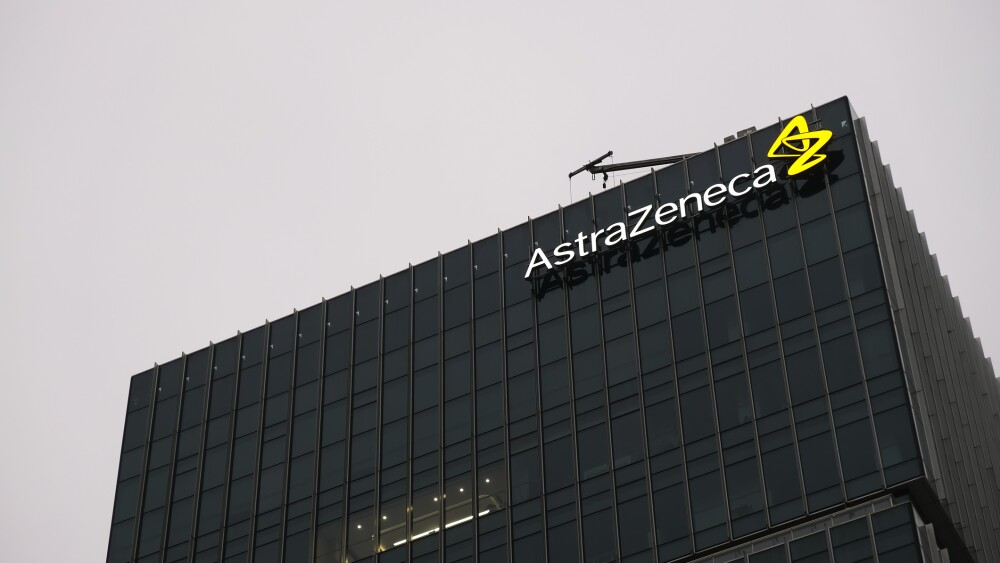Optic Neuropathy Market Size to Reach USD 4.6 Billion by 2035, Impelled by Advances in Personalized and Precision Medicine
Optic Neuropathy Market Outlook 2025-2035:
The 7 major optic neuropathy market reached a value of USD 3.1 Billion in 2024. Looking forward, IMARC Group expects the 7MM to reach USD 4.6 Billion by 2035, exhibiting a growth rate (CAGR) of 3.57% during 2025-2035. The market of optic neuropathy is fueled by the adoption of non-invasive and minimally invasive treatment options, including retinal implants, neuroprotective therapies, and advanced neurostimulation techniques. These innovative methods are effective for managing optic nerve damage and are helpful in maintaining visual function by reducing the demand for more invasive procedures. Technologies such as OCT are pivotal in the achievement of early diagnosis, while new neuroprotective agents and gene therapies aim to protect the optic nerve. Improvement in convenience, fewer side effects, and better patient outcomes will be observed following treatments using advanced therapies instead of traditional therapies. This has made advanced and individually tailored therapies for optic neuropathy more attractive to patients.
Advances in Early Detection and Diagnostic Technologies: Driving the Optic Neuropathy Market
Modern diagnostic and treatment technologies are significantly transforming the optic neuropathy market by enhancing patient management and outcomes. Advanced neuroimaging techniques, such as functional MRI and PET scans, allow for the accurate visualization and monitoring of optic nerve activity, thus helping in the assessment of damage and tracking disease progression. These advancements are further supported by biomarker-based diagnostics, including genetic and epigenetic profiling that can help identify unique risks for a patient developing optic neuropathy to guide tailored treatments. Molecular diagnostics such as next-generation sequencing (NGS) that identify alterations in the genes causing changes in the health of the optic nerve also increase the amount of targeted and effective therapies. With artificial intelligence (AI) being integrated into diagnostic platforms, optic neuropathy detection accuracy is expected to improve, predictive potential for loss of vision can be optimized, treatment regimens will be fine-tuned, and interventions customized for patients. Besides this, some of the non-invasive therapies emerging today are retinal implants, neuroprotective agents, and neurostimulation techniques with fewer side effects and patient engagement. Novel wearable technologies, such as smart glasses and biosensors, allow for real-time monitoring of visual function and optic nerve health, thus enabling early intervention and better long-term outcomes. These innovations are especially helpful in underserved areas, ensuring continuous care and enhancing access to advanced treatment options.
Request a PDF Sample Report: https://www.imarcgroup.com/optic-neuropathy-market/requestsample
Development of Novel Therapies and Pharmacological Treatments: Contributing to Market Expansion
The market for optic neuropathy is growing with the evolution of new therapies combined with advanced pharmacological treatments. New pharmacological agents are now being developed to target optic nerve degeneration, neuroinflammation, and oxidative stress associated with optic neuropathy. These new treatments have higher efficacy, fewer side effects, and more targeted mechanisms, resulting in better patient outcomes and the preservation of visual function. Research on biologic drugs is rapidly advancing for a cure in more serious cases of optic neuropathy, especially the ones who bear chronic inflammatory ailments or those whose damage could be due to associated diseases, such as glaucoma and optic neuritis. Most are monoclonal antibodies intended for pathways aimed at pro-inflammatory cytokines or neuroprotective factors that govern optic nerve care and reduce its neuroinflammatory aspects. Advances in drug delivery systems, including sustained-release implants and nanotechnology-based carriers for eye drops targeted to the optic nerve, permit localized and longer-lasting drug delivery to the optic nerve and reduce dosing frequency. Adjunct therapies aim to repair the optic nerve and foster recovery. These adjunct therapies include neurotrophic factors, antioxidants, and gene therapies for augmenting regeneration of the optic nerve and reducing cellular damage. Combination therapies involving the combination of neuroprotective agents with anti-inflammatory or neurostimulatory agents are promising in treating this complex pathophysiology associated with optic neuropathy, thus enhancing neuroprotection and improving visual outcomes. Non-invasive treatments, such as low-level laser therapy (LLLT) and transcranial magnetic stimulation (TMS), are increasingly more popular due to easy application, systemic exposure being reduced, and patient-centered application. These all are rapidly evolving changes in the management of optic neuropathy and improvement in the prospects of long-term vision preservation in patients.
Buy Full Report: https://www.imarcgroup.com/checkout?id=8167&method=809
Marketed Therapies in Optic Neuropathy Market
Raxone (Idebenone): Chiesi Farmaceutici/Santhera Pharmaceuticals
Raxone (Idebenone) is a synthetic antioxidant that has shown promise in the treatment of optic neuropathy, particularly in conditions like Leber’s Hereditary Optic Neuropathy (LHON). By protecting the optic nerve cells from oxidative damage, Raxone helps to preserve visual function and slow the progression of vision loss in patients with mitochondrial diseases affecting the optic nerve.
Emerging Therapies in Optic Neuropathy Market
GS010: GenSight Biologics
GS010 is an investigational gene therapy being developed for the treatment of optic neuropathy, particularly for conditions like geographic atrophy associated with age-related macular degeneration (AMD). It involves the delivery of a gene that encodes for a neuroprotective protein, aiming to restore retinal cell function and protect the optic nerve from further degeneration, potentially improving visual outcomes in patients with optic neuropathy.
Elamipretide: Stealth BioTherapeutics
Elamipretide is a mitochondrial-targeted peptide currently being investigated for the treatment of optic neuropathy. It works by improving mitochondrial function and reducing oxidative stress, which may help protect optic nerve cells from damage and promote the preservation of vision in conditions like optic neuropathy and other neurodegenerative eye diseases.
Drug Name | Company Name | MOA | ROA |
GS010 | GenSight Biologics | NADH dehydrogenase subunit 4 replacements | Intravitreal ocular unilateral Injection |
Elamipretide | Stealth BioTherapeutics | Cardiolipin modulators; Free radical scavengers; Mitochondrial permeability transition pore inhibitors | Topical ophthalmic solution |
Detailed list of emerging therapies in Optic Neuropathy is provided in the final report…
Leading Companies in the Optic Neuropathy Market:
The market research report by IMARC encompasses a comprehensive analysis of the competitive landscape in the market. Across the global Optic Neuropathy market, several leading companies are at the forefront of developing integrated platforms to enhance the management of Optic Neuropathy. Some of the major players include GenSight Biologics, Stealth BioTherapeutics, Chiesi Farmaceutici, Santhera Pharmaceuticals, and others. These companies are driving innovation in the Optic Neuropathy market through continuous research, diagnostic tools, and expanding their product offerings to meet the growing demand for Optic Neuropathy.
In June 2023, Santhera Pharmaceuticals announced the full divestment of its Raxone/idebenone business to Chiesi Farmaceutici. This transaction replaces the existing license agreement between the two companies from 2019. Under the new agreement, Chiesi acquired all assets and certain liabilities related to idebenone across all indications worldwide, including Raxone for LHON, for which Chiesi already held exclusive global license rights (except for North America and France). The deal streamlines the Raxone business for both companies, with Chiesi becoming the global brand owner, while Santhera can now focus on launching vamorolone in Europe, pending approval.
Key Players in Optic Neuropathy Market:
The key players in the Optic Neuropathy market who are in different phases of developing different therapies are GenSight Biologics, Stealth BioTherapeutics, Chiesi Farmaceutici, Santhera Pharmaceuticals, and Others.
Regional Analysis:
The major markets for Optic Neuropathy include the United States, Germany, France, the United Kingdom, Italy, Spain, and Japan. According to projections by IMARC, the United States has the largest patient pool for Optic Neuropathy while also representing the biggest market for its treatment. Novel treatments have recently been developed for optic neuropathy, with advancements in neuroprotective therapies, neuromodulation techniques, and gene therapies. These innovations aim to address core challenges in optic neuropathy, including optic nerve degeneration, neuroinflammation, and oxidative stress. Breakthrough formulations, such as sustained-release implants and targeted eye drops, offer localized drug delivery, improving patient adherence and providing longer-lasting therapeutic effects with fewer side effects, leading to better visual outcomes.
Recent advances in diagnostic tools and methodologies have provided earlier and more accurate identification of the severity and contributing factors, such as genetic predisposition and vascular health, of optic neuropathy. With these advances, timely and targeted treatment approaches can be undertaken with a reduced chance of further optic nerve damage and preservation of vision. Other factors that further propel the market growth of the optic neuropathy market are increased regulatory approvals, growing investments into research and development, and heightened collaborations between pharmaceutical companies and diagnostic technology vendors and research institutions. AI diagnostics and telemedicine platforms are also allowing care delivery remotely and in hard-to-reach areas, giving equal access to cutting-edge treatments. With advanced therapies and diagnostic solutions, regions such as North America and Europe are leading the way in innovation, driving the global optic neuropathy market toward sustained growth and better patient outcomes.
Recent Developments in Optic Neuropathy Market:
· In May 2024, GenSight Biologics announced initial efficacy and safety results from the REFLECT Phase III clinical trial of LUMEVOQ (GS010; lenadogene nolparvovec). The results, observed four years after a single administration of the gene therapy, demonstrate sustained improvements in visual acuity, with a favorable safety profile maintained. Additionally, bilateral injection showed enhanced effects compared to unilateral treatment, as evidenced by improvements in visual acuity and higher responder rates across all analyses.
Key information covered in the report.
Base Year: 2024
Historical Period: 2019-2024
Market Forecast: 2025-2035
Countries Covered
- United States
- Germany
- France
- United Kingdom
- Italy
- Spain
- Japan
Analysis Covered Across Each Country
- Historical, current, and future epidemiology scenario
- Historical, current, and future performance of the Optic Neuropathy market
- Historical, current, and future performance of various therapeutic categories in the market
- Sales of various drugs across the Optic Neuropathy market
- Reimbursement scenario in the market
- In-market and pipeline drugs
Competitive Landscape:
This report offers a comprehensive analysis of current Optic Neuropathy marketed drugs and late-stage pipeline drugs.
In-Market Drugs
- Drug Overview
- Mechanism of Action
- Regulatory Status
- Clinical Trial Results
- Drug Uptake and Market Performance
Late-Stage Pipeline Drugs
- Drug Overview
- Mechanism of Action
- Regulatory Status
- Clinical Trial Results
- Drug Uptake and Market Performance
Ask Our Expert & Browse Full Report with TOC: https://www.imarcgroup.com/optic-neuropathy-market/toc
IMARC Group Offer Other Reports:
Sialidosis Market: The 7 major sialidosis markets are expected to exhibit a CAGR of 6.9% during 2024-2034.
Pharyngitis Market: The 7 major pharyngitis markets reached a value of US$ 1.6 Billion in 2023. Looking forward, IMARC Group expects the 7MM to reach US$ 2.3 Billion by 2034, exhibiting a growth rate (CAGR) of 3.29% during 2024-2034.
Hyperinsulinemia Market: The 7 major hyperinsulinemia markets reached a value of US$ 70.0 Million in 2023. Looking forward, IMARC Group expects the 7MM to reach US$ 114.9 Million by 2034, exhibiting a growth rate (CAGR) of 4.61% during 2024-2034.
Myopia Market: The 7 major myopia markets are expected to exhibit a CAGR of 6.14% during 2024-2034.
Presbyopia Market: The 7 major presbyopia markets reached a value of USD 1,755.9 Million in 2024. Looking forward, IMARC Group expects the 7MM to reach USD 2,513.0 Million by 2035, exhibiting a growth rate (CAGR) of 3.31% during 2025-2035.
Keratoconus Market: The 7 major keratoconus markets reached a value of US$ 202.1 Million in 2023. Looking forward, IMARC Group expects the 7MM to reach US$ 275.0 Million by 2034, exhibiting a growth rate (CAGR) of 2.84% during 2024-2034.
Contact US
IMARC Group
134 N 4th St. Brooklyn, NY 11249, USA
Email: Sales@imarcgroup.com
Tel No:(D) +91 120 433 0800
Phone Number: - +1 631 791 1145, +91-120-433-0800






